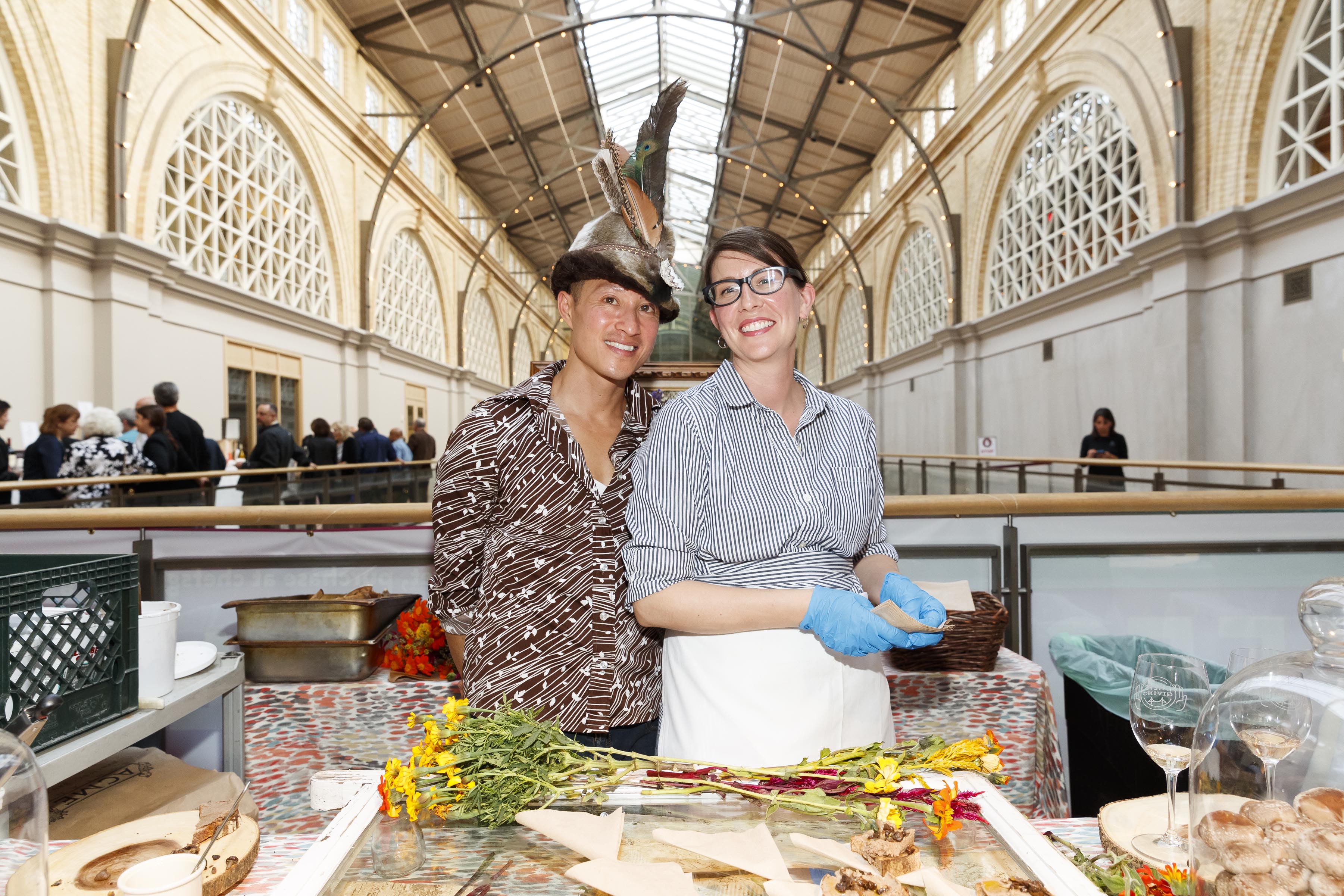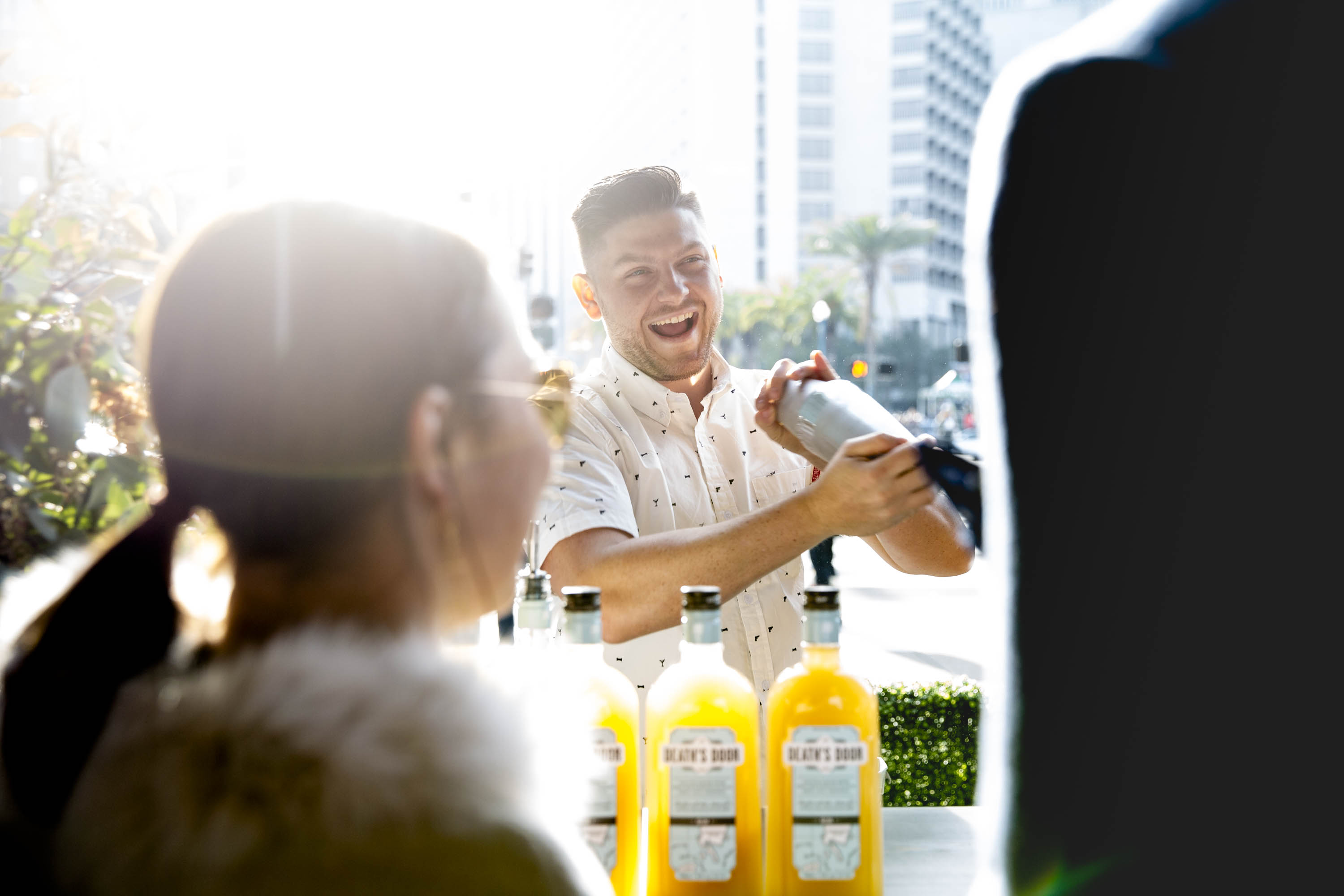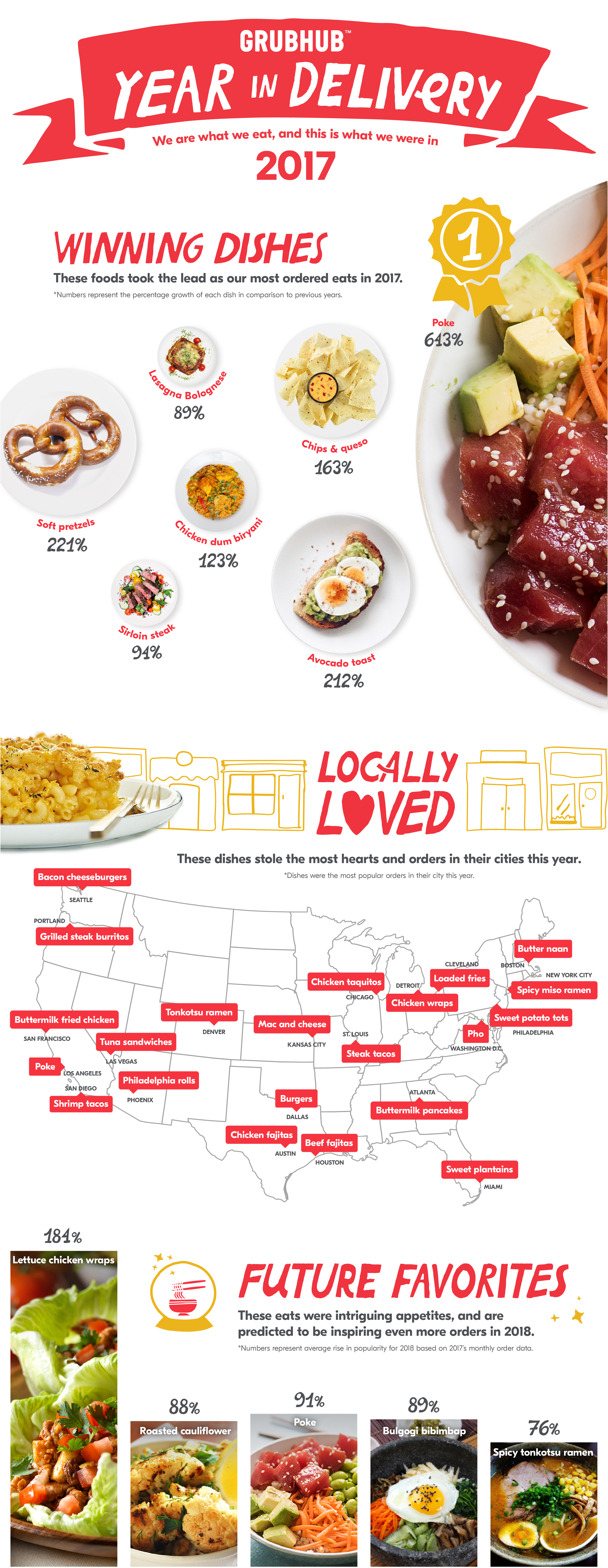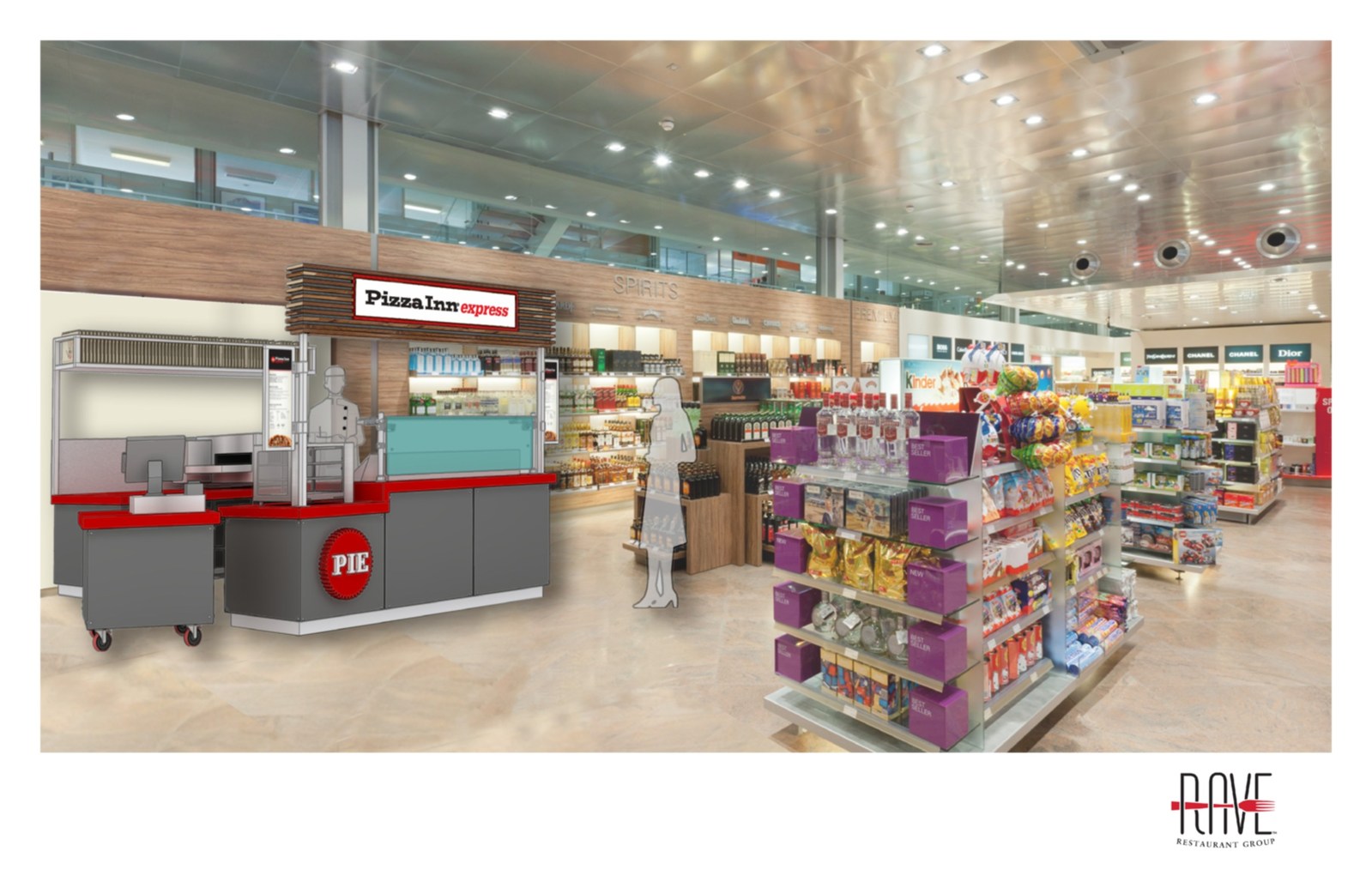ChefsGiving Success and Grubhub’s ‘Year in Delivery’
12 Min Read By MRM Staff
The Thursday edition of MRM’s Daily Bite includes news from ChefsGiving, Grubhub, Revel Systems, Dinova and Pizza Inn.
Send news items to Barbara Castiglia at bcastiglia@modernrestaurantmanagement.com.
ChefsGiving Success Help Fire Relief
On Sunday, Nov. 19, the ChefsGiving Gala brought a full week of giving to a ceremonial close. Co-hosted by ChefsGiving founder Liam Mayclem and Leslie Sbrocco of KQED, the gala attracted a capacity crowd of 1,050 guests from across the Bay Area who came to drink, eat, and give in the Grand Hall at San Francisco’s iconic Ferry Building. Profits from ticket and wine sales, as well as a live and silent auction, will be donated to two charity partners in an effort to help those devastated by the Northern California fires: Tipping Point Emergency Relief Fund and Restaurants Care .

Photo by Drew Altizer
Williams Sonoma presented the inaugural ChefsGiving Humanitarian Award to SF FIGHTS FIRE , San Francisco’s restaurants and food purveyors committed to helping those affected by the wildfires. This group of big-hearted chefs mobilized quickly and efficiently and took food to those who needed it most, first responders, and those displaced in shelters. Chefs Ravi Kapr (Liholiho Yacht Club), Sam Mogamman (Bi-Rite,) and Stuart Brioza (State Bird Provisions and The Progress) were on-hand to receive the award.
Live and silent auctions raised more than $100,000 with lots including dinners at Chef Dominique Crenn’s farm that brought in $30,000, and a two-night trip for four to Las Vegas with Chef Hubert Keller, which sold for $10,000.

Photo by Drew Altizer
“I could not be more proud of our amazing team of volunteers who made the impossible, possible, and pulled off an exceptional gala and a restaurant week in just five weeks. Here’s to our next Gala in 2018,” said ChefsGiving founder Liam Mayclem.
Eleven of San Francisco’s top bars, including Bourbon & Branch, Elixir, and Smuggler’s Cove mixed cocktails for guests, and fifty wine tables representing more than 200 brands from around the country and world poured their selections. The list included
- Dom Perignon
- Freeman Vineyards, Sonoma
- AldenAlli by Dan Kosta
- Peay Vineyards
- Unti Vineyards
- Shafer Vineyards, Napa
More than 30 diverse food vendors including Dandelion Chocolate, Slanted Door , and Mijita Cocina Mexicana kept guests full for the four-hour extravaganza. At the sold-out, 200-person VIP hour, caviar was served by The Caviar Company and wine was poured by Opus One .
“In all my years of producing or chairing galas, the community spirit and the positive energy was felt by all in ways that I have never seen at a fundraiser before. The good energy in the room exceeded all expectations,” said Gala Chair Debbie Zachareas.

Emotional points throughout the evening brought the community together. Winemaker Dan Kosta, who lost his Sonoma home in the recent fires, spoke of his loss and of the gratitude for having his family safe. “We were lucky. We escaped alive but many people did not. Our hearts are with them,” said Kosta.
The amount of money raised is still an estimate, as donations from restaurants that participated in ChefsGiving Week are still coming in. FundCru , a new blockchain-powered fundraising platform that funds causes through e-commerce transactions and direct donations launched ahead of schedule to help fundraise for ChefsGiving . Donations are still being accepted at https://go.fundcru.com/raise/chefsgiving.
Additional monetary contributions to ChefsGiving were given by:
- Andrew Miller Foundation
- Bay Club
- Sun Basket
- UberEATS
- Williams Sonoma
As part of ChefsGiving Week, restaurants around the Bay Area including Rich Table, Slanted Door, State Bird Provisions, Outerlands, Robin, August (1) Five, Tosca, ‘aina, Foreign Cinema, The Riddler , and many more raised money for Tipping Point Emergency Relief Fund and Restaurants Care through special ChefsGiving menus, dedicated menu items, or fundraising events the week of November 13-19. On the national front, Chef José Andrés donated proceeds from a week of dinners from Bazaar Meat in Las Vegas and Chef Russell Jackson of Subculture Dining in New York donated a dinner for two at his upcoming pop-up.
“We are thrilled at the Gala turnout and the enormous giving spirit shown by our community. The restaurant participation was beyond our hopes and dreams with more than 127 restaurants signed up,” said Chef Chair Dominique Crenn, who raised $16,000 from two nights of special menus at Atelier Crenn and Petit Crenn.
ChefsGiving menus and dishes from restaurants like 4505 Burgers & BBQ and Craftsman & Wolves The Den were featured on the UberEATS app, and Uber has pledged to contribute up to $50,000 to the participating charities in support of the initiative.
Grubhub’s ‘Year In Delivery’ Trend Report
Grubhub announced the results of its second annual ‘Year In Delivery’ trends analysis. The data identifies the trendiest delivery dishes of 2017, as well as the foods expected to rise in popularity in 2018.
A few key takeaways from the report include:
-
Poke was trendier than ever for delivery in 2017 and is forecasted to stay popular in 2018.
-
San Francisco preferred buttermilk fried chicken, whereas New Yorkloved to eat Japanese cuisine, ordering more spicy miso ramen than the rest of the country in 2017.
-
Vegetable entrees, such as jackfruit and cauliflower steaks, are on the rise for delivery in 2018, reinforcing national culinary forecasts.
“We’re always looking for ways to connect our diners to a wide variety of cuisines from our 75,000 restaurants nationwide,” said Barbara Martin Coppola, chief marketing officer at Grubhub. “We were delighted to dig into our data and identify food trends, which this year reflect the wide-ranging tastes of our diners — from poke bowls to steak, and avocado toast to burritos.”
Food Trends Analysis Results
The Most Popular Dishes of 2017
- Poke — 643 percent rise in popularity
- Soft pretzels — 221 percent rise in popularity
- Avocado toast — 212 percent rise in popularity
- Chips and queso — 163 percent rise in popularity
- Acai bowl — 138 percent rise in popularity
- Chicken fried steak — 130 percent rise in popularity
- Bean and cheese burrito — 127 percent rise in popularity
- Italian sandwich — 125 percent rise in popularity
- Chicken dum biryani — 123 percent rise in popularity
- Mini corn dogs — 109 percent rise in popularity
- California cobb salad — 108 percent rise in popularity
- Snow crab legs — 106 percent rise in popularity
- Country fried steak — 104 percent rise in popularity
- Sirloin steak — 94 percent rise in popularity
- Lasagna bolognese — 89 percent rise in popularity
The Most Popular Dishes by City in 2017
- Atlanta: Buttermilk pancakes — 234 percent rise in popularity
- Austin, Texas: Chicken fajitas — 416 percent rise in popularity
- Boston: Butter naan — 362 percent rise in popularity
- Chicago: Chicken taquitos — 373 percent rise in popularity
- Cleveland: Loaded fries — 350 percent rise in popularity
- Dallas: Beef burger — 325 percent more popularly ordered in Dallas this year
- Denver: Tonkotsu ramen — 152 percent rise in popularity
- Detroit: Lettuce chicken wraps — 340 percent rise in popularity
- Houston: Beef fajitas — 289 percent rise in popularity
- Kansas City, Mo.: Mac and cheese — 447 percent rise in popularity
- Las Vegas: Tuna sandwich — 203 percent rise in popularity
- Los Angeles: Poke — 260 percent rise in popularity
- Miami: Sweet plantains — 418 percent rise in popularity
- New York: Spicy miso ramen — 331 percent rise in popularity
- Philadelphia: Sweet potato tots — 308 percent rise in popularity
- Phoenix: Philadelphia roll — 403 percent rise in popularity
- Portland, Ore.: Grilled steak burrito — 397 percent rise in popularity
- St. Louis: Steak tacos — 316 percent rise in popularity
- San Diego: Shrimp taco — 218 percent rise in popularity
- San Francisco: Buttermilk fried chicken — 136 percent rise in popularity
- Seattle: Bacon cheeseburgers — 344 percent rise in popularity
- Washington: Pho — 143 percent rise in popularity
The Dishes Forecasted for Popularity in 2018
- Lettuce chicken wraps — 184 percent rise in average monthly popularity
- Poke — 91 percent rise in average monthly popularity
- Bulgogi bibimbap — 89 percent rise in average monthly popularity
- Roasted cauliflower — 88 percent rise in average monthly popularity
- Spicy tonkotsu ramen — 76 percent rise in average monthly popularity
- Kimchi fries — 75 percent rise in average monthly popularity
- Cinnamon buns — 74 percent rise in average monthly popularity
- Pumpkin soup — 64 percent rise in average monthly popularity
- Brisket sandwich — 54 percent rise in average monthly popularity
- Yellowtail belly — 54 percent rise in average monthly popularity
- Mini corn dogs — 53 percent rise in average monthly popularity
- Pork belly — 53 percent rise in average monthly popularity
- Brick pressed chicken — 48 percent rise in average monthly popularity
- Shio ramen — 47 percent rise in average monthly popularity
- Korean fried chicken wings — 45 percent rise in average monthly popularity
The Trendiest Dishes for Delivery, in Line with National Culinary Reports
- Spaghetti squash — 351 percent rise in average monthly popularity
- Mezcal — 234 percent rise in average monthly popularity
- Zucchini noodles — 230 percent rise in average monthly popularity
- Jackfruit — 123 percent rise in average monthly popularity
- Crudites — 27 percent rise in average monthly popularity
- Deviled eggs — 26 percent rise in average monthly popularity
- Rotisserie chicken — 26 percent rise in average monthly popularity
- Cauliflower steaks — 21 percent rise in average monthly popularity
- Tater tots — 13 percent rise in average monthly popularity
- Roasted vegetables — 10 percent rise in average monthly popularity

Revel System’s Revealing Growth
Revel Systems reported 76 percent year-over-year growth, including a series of initiatives that strengthened the company’s global business operations in 2017. The executive team has been boosted with the appointments of Dan Madden to CFO, Erick Kobres to CTO, and Christiana Khostovan to General Counsel. Revel also added Mike Miller as VP of Sales and Josh Schultz as VP of Revel Advantage and Channel Sales. In addition, the company moved its San Francisco headquarters into a larger and more centralized office location, shifted its APAC headquarters to a sustainable and historically significant location in Sydney, greatly expanded and upgraded its Lithuania office, and announced the opening of a new Atlanta-based technology center for the organization.
“Dan and Erick will take Revel to the next level,” said Revel CEO Scott Betts. “We’ve grown tremendously this year in significant ways and with their support and Christiana’s counsel, we anticipate all-round company growth to rapidly continue through 2018.”
Here are some influential trends Revel is seeing in the coming years.
Driverless cars/Autonomous Vehicles/Electric Vehicles
A lot of car companies are making bold claims in terms of what the next generation of vehicles will bring about by 2020/25. Self-driving is going to be close on the heels of electric cars and both will offer new retail opportunities.
Look for new retail opportunities at convenience spaces – with electric cars, people need to stop and charge for longer periods of time. You need 15-30 mins at a charging station compared with 5 minutes at a gas station which means more potential customers waiting around – a prime opportunity for retailers.
With a cloud connection back to the manufacturers, electric vehicles can provide precise locations and present new retail opportunities. With the ability to ID a person and vehicle that is already attached to a profile, you can be authenticated for purchases through your car. To some degree, the first example is Tesla where they already have the user’s card number, so there is no need for a user interface on the supercharger, which identifies the car through the charge port. The user interface is the car itself. This type of technology is already in some new cars now, demonstrating the possibilities.
That means a lot of things for convenience within the retail space, tighter integration between the establishment and in-car infotainment experience. Convenience retailers will build on this in order to make payments, customer verification, and the loyalty experience seamless. This is also good news for consumers, who will have a more seamless and less tedious process for payments.
Self-driving cars
Self-driving cars can potentially be a game changer for small brick and mortar retailers and restaurants e.g. there may be examples where they are used for courier services, although it’s still too early to call. The closest example we have now are click and collect use cases which are benefitting brick and mortar, but customers still have to drive to pick up their order in the store or restaurant.
Self-driving cars can potentially be a game changer for small brick and mortar retailers and restaurants.
It can be more convenient than spending time in store, and consumers can still have a curated online experience and avoid delays on site. Large retailers are participating in this already, and self-driving cars and drones may democratize this sort of capability down to small businesses which can also take advantage to compete and differentiate using a custom commerce app. In this way, it’s possible that we could see consumers ordering food or retail items for delivery during a specific time window and cuing a driverless car/courier type option to deliver – or even sending their own car out on errands for them.
Voice Ordering
In the next one to three years you may be able to have a voice ordering experience by conversing with an app in your car’s infotainment system. Apple’s CarPlay and Android Auto and similar technologies will improve greatly over time. More auto manufacturers are developing apps for car systems and more users are participating, so the quality of the experience has already improved. The voice detection and comprehension features of these apps are becoming more sophisticated and may soon replace the traditional drive through experience where crackly, low quality telecom systems create annoyance and miscommunication.
Augmented Reality (AR)
The building blocks for new AR experiences are already here and Revel is now experimenting with what we can offer our customers. e.g. in terms of operational capabilities, an AR feature could quickly overlay inventory information on storage areas, overlay compliance information on food prep areas for temperature or food safety compliance, monitor temperature in storage areas, and show employees their next task in real space.
In conjunction with location services, AR allows you to route customers to a specific location in store for queuing or order pickup, or to participate in an in-store special. E.g. a customer inside an app could survey a scene and get information on where they need to go to do specific things like place an order, pick up an order, check-in, see an item on sale etc. This is a game changer for granular location-based retailing.
There are also unique opps for retail gamification marketing campaigns e.g. Pokémon go was an interesting concept but now that we have true AR capability in iOS 11, there are a lot more possibilities and we will start to see more of these implementations next year with early adopters.
In the case of mobile order pickups at retail or restaurant locations where people are waiting for their mobile order, AR offers more interactive options. In this case, you can offer specific target marketing experiences for that waiting window such as key promotions or seasonal menu items.
AR for Food Trucks
There are a few different use cases for food trucks and AR e.g. by using AR capabilities, the queue in front of a food truck could see the menu items, prices etc on their phone and order right off the camera view before stepping up to the window. Users could also see the pickup window of the truck animate when their order is ready. This can bring order to the sometimes-chaotic flow around food trucks. In general, there are a number of interesting ramifications for pop-up retail beyond food trucks.
iOS 11
The new Apple cash update that enables users to send money through iMessage will enable some interesting use cases e.g. in the next year or two, we could be able to order food from a local restaurant through iMessage by having a chat with a bot. We will start to see more of these use cases and do more business this way.
AI
Also in the next year or so, we will see the next round of enablement through AI-based assistants. Amazon has started to show us what is possible with the Echo and we’re getting closer to this with Siri. Although this type of purchase intent is already available through some apps, we’re not quite there yet but we can already hail a ride and book a restaurant table using Siri.
There is a lot of complexity involved in the EMV chip and NFC (tap) use cases, but more certificate-based payment options will eventually start to make their way into the payments ecosystem.
Ambient Biometrics
Revel believes ambient biometrics will be an important part of the future of commerce. Biometrics is here to stay, and these experiences will consistently improve and become more frictionless. Face ID was well executed by Apple where the user authenticates via facial recognition, and Apple has proven that biometrics can get more convenient e.g. touch ID was already phenomenal. We envision a handoff where the user authenticates and puts their phone back in their pocket while remaining authenticated. Users can remain signed in for frictionless use cases as we have seen with proof of concept trials at Amazon’s brick and mortar store.
With “always on” biometric authentication, users will be able to take an item from a store or leave after a meal in a restaurant with the assurance that the transaction has seamlessly and automatically occurred. However, due to infrastructure and security requirements this capability may be farther out in the future.
The way the credit card processing system works today is complex and may hinder progress here. There is a lot of complexity involved in the EMV chip and NFC (tap) use cases, but more certificate-based payment options will eventually start to make their way into the payments ecosystem. For example, Apple pay is EMV-compliant because it’s currently an industry mandate – but these specifications are already over a decade old and are just now being rolled out in the US. You can imagine getting rid of that last step where you do the tap on the payment device – we are probably another five years away from that.
More on Dinova’s Plate
Dinova, Inc., the proprietary marketplace exclusively focused on connecting business diners to restaurants nationwide said second quarter marketplace results reveal growth throughout the year, despite downturn in the restaurant industry. In the third quarter, business dining spend through Dinova’s marketplace has increased 20 percent, with 21 percent growth in the number of business dining transactions and a 6 percent increase in transaction size from our enterprise corporation segment, compared with the third quarter of 2016.
By contrast, consumer spend at restaurants in general was down again for Q3 2017 with a 2.2 percent* decline of same-store sales, according to Black Box Intelligence, a TDn2K company. Additionally, consumer traffic was down 4.1 percent in Q3, further highlighting the need for restaurants to find alternative ways to bring in spend.
Driven by its preferential connection to business diners and ability to influence which restaurants they frequent, Dinova continues to add high-profile restaurants and companies to its business dining marketplace and expand its reach nationwide.

“Our plate has been wonderfully full this year – we’ve earned tremendous growth, multiple company awards, and a significant investment from Frontier Capital,” says Vic Macchio, CEO and founder of Dinova. “We’re excited now to forge ahead and focus on innovation and growing our marketplace in 2018 and beyond.”
Pizza Inn’s New Prototype
Pizza Inn is launching a new prototype for a non-traditional licensing model called Pizza Inn Express, or PIE for short, that will give customers a fast, seamless experience when picking up their favorite hot pizza.

“Convenience stores are a $575 billion industry with 70 percent of sales attributed to in-store purchases,” said Scott Crane, chief executive officer of Pizza Inn parent company, Rave Restaurant Group, Inc. “This could be a game-changer for Pizza Inn as we tap into new markets and expansion opportunities for our flagship brand. We’re already seeing great interest from existing and potential franchisees who see this model as a new way to serve customers the same iconic, quality pizza they have come to expect, but in a faster setting.”
Geared toward convenience stores, but also an airport or entertainment venue option, the licensing deal for Pizza Inn Express will allow customers to order and pay at a kiosk for grab-and-go or pick up their food at a designated spot. Pizza Inn has a strong presence in the southeastern part of the country where the convenience store segment has the nation’s highest grouping of independent operators. Pizza Inn expects to have its first prototypes operating within the next 90 days.
“The PIE kiosk is attractive to non-traditional operators because it allows them to move quickly, be more nimble, and react to changes in customer traffic and facilities, all at a minimal investment,” said Bob Bafundo, president of Pizza Inn. “It’s a branded concept that’s attractive enough to be the permanent centerpiece in a travel center or airport, yet nimble enough to provide the same benefits traditional operators get from a food truck.”
Founded in 1958, Pizza Inn is a subsidiary of RAVE Restaurant Group, Inc., which owns, franchises and supplies more than 300 Pizza Inn and Pie Five restaurants operating domestically and internationally.


